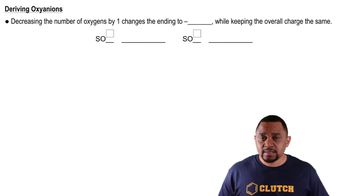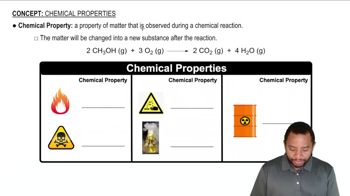Here are the essential concepts you must grasp in order to answer the question correctly.
Ionic Compounds
Ionic compounds are formed when atoms transfer electrons, resulting in the formation of positively charged cations and negatively charged anions. These oppositely charged ions attract each other, creating a stable compound. The overall charge of the compound is neutral, and they typically have high melting and boiling points due to the strong electrostatic forces between the ions.
Recommended video:
Polyatomic Ions
Polyatomic ions are ions that consist of two or more atoms covalently bonded together, which carry a net charge. Common examples include sulfate (SO4^2-) and acetate (C2H3O2^-). Understanding polyatomic ions is crucial for naming and writing formulas for ionic compounds, as they often replace single-element anions in these compounds.
Recommended video:
Polyatomic Ion Variations
Chemical Nomenclature
Chemical nomenclature is the system of naming chemical compounds based on specific rules. For ionic compounds, the name typically includes the cation followed by the anion. When polyatomic ions are involved, the name of the polyatomic ion is used directly, which is essential for accurately identifying and communicating the composition of the compound, such as in Mg(C2H3O2)2, which is named magnesium acetate.
Recommended video:
 Verified step by step guidance
Verified step by step guidance


